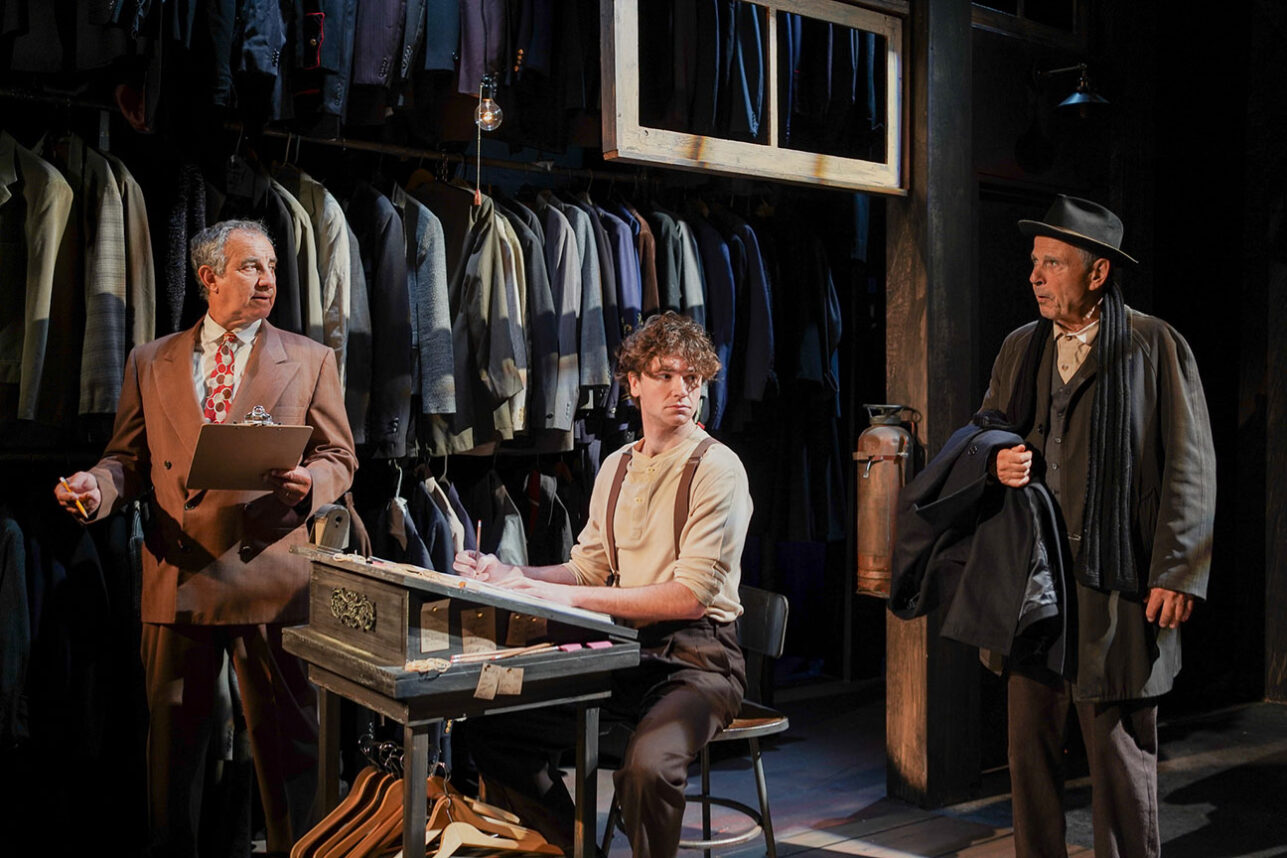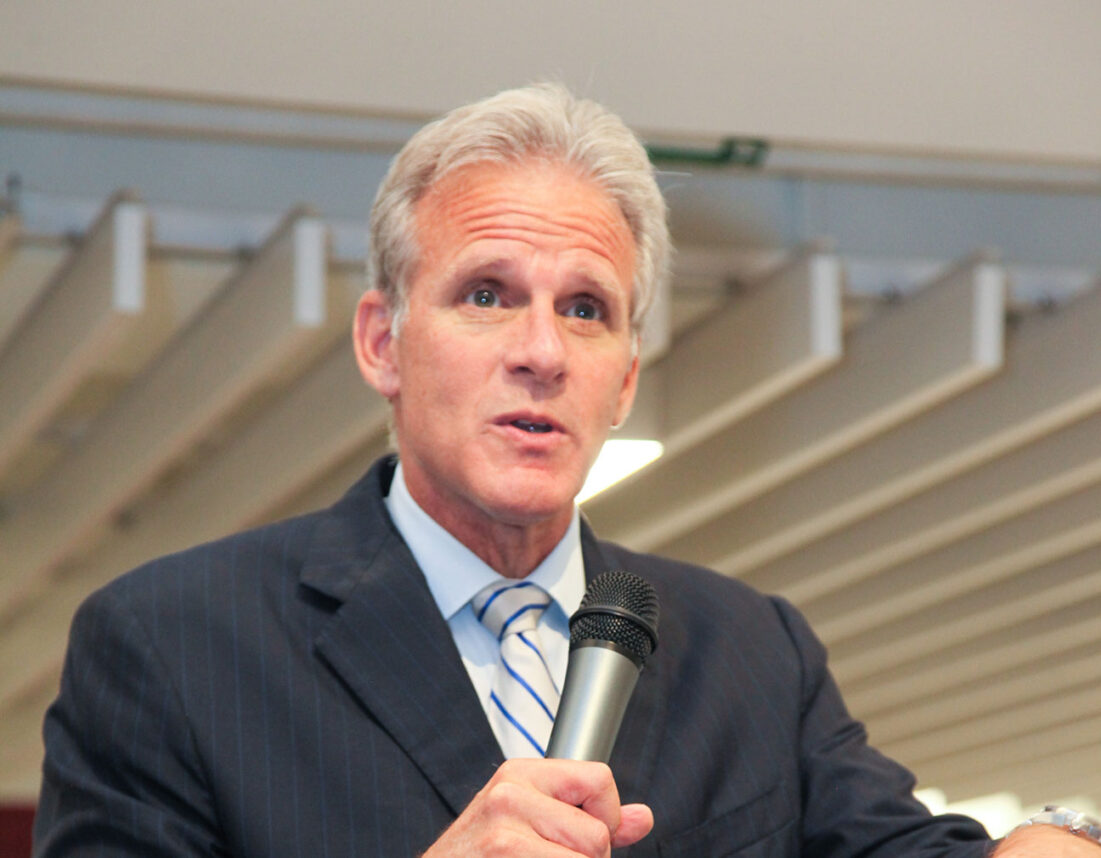“A Dream No More,” an ambitious documentary on Israel’s first 50 years, intended originally as a highlight of the nation’s anniversary jubilee, is, indeed, a dream no more. Nearly completed, the film has been permanently shelved by the producing Simon Wiesenthal Center, to the considerable dismay of the documentary’s chief creators.
There are two different diagnoses for “Dream’s” demise, one advanced by the film’s director-writer Mark Jonathan Harris and his co-writer Stuart Schoffman, the other by Rabbi Marvin Hier, the Wiesenthal Center’s dean and founder, joined by Richard Trank, executive producer for the center’s Moriah Films division.
Harris and Schoffman believe that the project was scuttled because American Jews — and by extension the Wiesenthal Center — are unwilling to accept a realistic representation of Israeli life and history, depicting the shadows along with the light.
To Hier and Trank, it’s a simpler matter of creative and conceptual differences between producer and director, a familiar Hollywood story, and they are now working on a new version of the film.
The Hier-Trank team, as co-producers, have won Oscars for two documentaries, “Genocide” in 1981 and this year’s “The Long Way Home.”
Schoffman, an American-born Israeli, went public with the controversy this month in the Jerusalem Report magazine through his regular column.
Schoffman writes that he and Harris decided to encapsulate the story of Israel’s statehood through a “mosaic” of different voices, “precisely because there are so many vigorously competing versions of the development, present-day priorities and future prospects of the Jewish state.”
After initial script approval, various revisions and extensive filming in Israel, Moriah “shut down production in June 1998, on the grounds that the film wasn’t working,” writes Schoffman.
At that point, the dates for a series of “world premieres” of the film, in such prestigious venues as Washington’s Kennedy Center and New York’s Radio City Music Hall had already passed.
In the end, Schoffman writes, and confirms in an interview, “‘A Dream No More’ was unacceptable as the official, feel-good Diaspora jubilee film… What this confirms, I think, is that on the occasion of Israel’s 50th birthday, the relationship between Israel and the Diaspora is in serious need of re-examination.
“It would seem that a great many American Jews find Israel too complex, disturbing and problematic to confront head-on, leaving them with a set of flawed alternatives: they can tune Israel out; or else cling to the pristine picture of Israel that no Israeli, whatever his or her political coloration, can take seriously.”
Harris largely agrees with his co-writer and brings considerable authority to the discussion as a veteran filmmaker and teacher. A professor at the USC School of Cinema-Television, he has won an Academy Award in his own right and was also the director-writer for the Wiesenthal Center’s Oscar-winning “The Long Way Home.”
“We worked very hard on this film for 14 to 15 months, and I am very disheartened that it will not be shown,” says Harris. “We tried to give a positive, but also accurate, portrayal of Israel, and I think we gave a very balanced picture, of which I am very proud.”
Harris says he tried to present a cross-section of Israeli opinions in the film, including the voices of writers, settlers, kibbutzniks, businessmen, Orthodox leaders, philosophers and ordinary people of various ethnic backgrounds.
“These are very articulate, passionate and attractive people, who express the dynamism of Israel and grapple honestly with the country’s problems,” he says.
Harris says that Hier and Trank did not see their final cut of the film, but acknowledges that it was in trouble from the first cut early this year.
He believes the Wiesenthal Center was concerned that the film, in its planned format, might offend the center’s influential supporters. In a deeper sense, he adds, the film’s problems reflected the political and artistic controversies that plagued Israel’s entire 50th anniversary celebration.
To Hier and Trank, the subtleties of Diaspora attitudes had nothing to do with axing the film.
Hier acknowledges that when the filmmakers first presented their basic concept, he was willing to give it a try, “But when I saw the first cut, I was 100 percent convinced it wouldn’t work,” he says.
“The film was full of talking heads, of people who had played no major roles in the actual historical events, debating in cafes,” he maintains.
“We wanted a film that would excite young people, who knew little about Israel’s past,” he adds. “In our previous documentaries, we had real historical depth, and we did that by showing great archival footage of the leading figures who actually shaped the events.”
The other major problem was that “Dream” did not have a narrator, who would provide continuity and historical background, says Trank.
“Without a narrative or coherent timeline, what we got was a film that kept jumping from one topic to another, and two hours of different scenes strung together — some worked and some didn’t,” he says.
When numerous attempts to fix the film didn’t work out, Trank said he made the artistic and fiscal decision in June to shut down production.
Hier vigorously denies that fear of offending supporters, or officials in Jerusalem, where the Wiesenthal Center hopes to erect a Museum of Tolerance, played a part in scuttling the project.
He says that before making the final decision, he consulted with colleagues, trustees and “intellectuals and journalists in Israel. They all agreed it was a non-starter,” he says.
Trank says the film was budgeted at about $1 million. Of this amount, some $300,000 to $400,000 was for the purchase of historical and archival footage, which will be salvaged and incorporated in the new documentary, covering the same five decades in Israel’s history.
Out-of-pocket losses come to about $250,000, says Hier, and some $300,000 will have to be added to complete the new, as yet untitled, version.
Wiesenthal Center trustee Merv Adelson, who exercises oversight of Moriah Films, could not be reached for comment. But the veteran Hollywood and media executive, say Hier and Trank, was fully supportive of their decision, even at the cost of $250,000.
Another trustee, Rosalie Zalis, says that funds for the film division come from specified individual contributors, and are separate from the general Wiesenthal Center operations.
“When I was in Israel last May, I was told that the film was in trouble,” she says. “Nobody likes to lose money, but given the reputation and track record of Moriah Films, it would be stupid to risk that by coming out with a bad film.”
The script for the new film is being written by noted Oxford historian Martin Gilbert, based largely on his book “Israel: A History,” in collaboration with Hier and Emmy award-winner Scott Goldstein. Trank is the director.
It is hoped that one of Hollywood’s most distinguished actors will serve as narrator.
The new documentary will not prettify Israel’s history or current problems, insists Hier. “We won’t produce a feel-good Jewish National Fund film,” he says. “That wouldn’t have any credibility.”
The documentary, to be completed in four to five months, will be, if anything, “more honest and hard-hitting” than the aborted project, promises Trank.






















 More news and opinions than at a Shabbat dinner, right in your inbox.
More news and opinions than at a Shabbat dinner, right in your inbox.